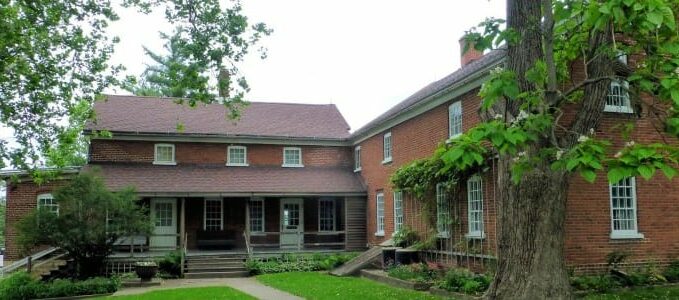Blog
Amana Bricks and Mortar

Moving here 4 years ago, I was struck by the unique and historic buildings that make up the 7 villages of the Amana Colonies. Some homes are brick, some sandstone, and others weathered wood siding, all from the Amana communal era. Sprinkled in are newer homes of various designs. I later learned about efforts since 1979 to restore and retain the authentic pre-1932 Amana buildings. Below is an explantion by local author Emilie Hoppe of the history of building preservation here in the Amana Colonies. I only wish it had begun earlier and that more buildings could have been preserved.
In 1979 Amana residents looked about and realized that they needed to save Amana's historical buildings, so they formed the Amana Preservation Foundation.
The goal of the Amana Preservation Foundation was to preserve Amana's cultural heritage through the preservation of buildings and landscape features. Believe it or not, until about the mid-1970's there was little sentiment nationwide for historic preservation and few resources to help, but interest began to build. In Amana in 1979, while nearly all communal era homes were still in use as residences, a significant number had been removed and had lost some of their architectural integrity. Some out-buildings and barns had been lost due to neglect or new construction. With growing pressure to develop, the seven villages were in danger of losing their unique look and appeal. The Amana Preservation Foundation members were determined to save Amana's remaining stone, brick and wood frame communal era structures, so they got organized. The first step was to educate property owners on the value of historic preservation. To that end the Amana Preservation Foundation commissioned a survey of the seven Colonies, identifying and cataloging every pre-1932 structure. They then hosted educational workshops to promote the idea that preservation of buildings is key to preserving Amana's identity and its appeal as both a visitor destination and as a place to live. The Preservation Foundation then published a series of pamphlets for property owners to share resources and practical information on how to go about saving an old building.
Most vital of all, the Preservation Foundation was instrumental in helping to form the Amana Land Use District, lobbying the state for special legislation to place the villages in a historic preservation zone and enact rules to help govern land use and to monitor and moderate new development and the repurposing of historic buildings.
Foundation members pulled on their work gloves and bought buildings that needed help. They raised money to buy the building, restored them, then rented or sold them. Within a few years they had saved a dozen buildings.
As you read the list of accomplishments, remember the group was entirely volunteer-driven. By 1990, it became apparent that the most effective way to achieve future goals was to dissolve the Amana Preservation Foundation and focus preservation efforts through the Amana Heritage Society and the Amana Historic Sites Foundation, both having experienced, professional staffing and dedicated volunteer support. Both are 501c 3 organizations and thus set up to apply for and receive grant monies and donations.
Projects the Amana Preservation Foundation first championed have since come about in Amana, including the Amana Festalle and Market barn reclamation projects, the Amana Main Street Project which incorporated historic landscape elements with a massive drainage and paving project in downtown Amana, Amana's Kolonieweg bike trail, the restoration of the Amana Woolen Mill, the preservation of the Amana Mill Race, and other projects that have been undertaken or are on their way, were first conceived in Amana Preservation Foundation meetings.
From Willkommen, used by permission of Emilie Hoppe
Efforts continue to retain the authenticity of old Amana structures. As business owners, we must comply with Amana Land Use District regulations for upgrades or additions to the outside of our building including signage, fencing, roofing, and type and color of siding. Die Heimat itself is on the National Historic Register as well as being a part of the larger historic recognition of all the Amana Colonies.

